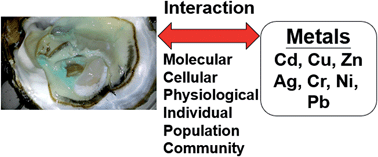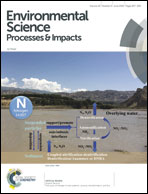Trace metals in oysters: molecular and cellular mechanisms and ecotoxicological impacts
Abstract
Oysters are important benthic bivalves in coastal and estuarine environments. They are widely farmed due to their rapid growth and taste; they are also widely applied in environmental monitoring of coastal pollution due to their accumulation of contaminants. Most importantly, oysters are among the few marine organisms that are considered to be hyper-accumulators of many toxic metals, such as cadmium, copper and zinc. As such, there is a tremendous call to study the interactions between metals and oysters, especially due to the increasing metal pollution in many coastal and estuarine waters. Over the past decades, many studies have focused on metal accumulation in oysters as well as the ecotoxicological effects of metals on oysters. In this review, we summarize the recent progress in our understanding of the molecular and cellular mechanisms of metal accumulation, sequestration and toxicity in oysters. Applications of modern technologies such as omics and nanoscale imaging have added significantly to our knowledge of metal biology in oysters. Variations between different metals also demonstrate the diversity of the interactions between oysters and metals. Despite this recent progress, however, there is a need for further study of the molecular mechanisms of metal uptake and toxicity as well as the joint effects of metal mixtures on oyster populations. Oysters have higher numbers of stress responsive genes than most animals, which may have been induced by gene duplication during the evolution of their intertidal environmental adaptations. The divergent expression of stress responsive genes may explain the different tolerances for metals among different species. These fundamental studies may eventually provide promising solutions for reducing toxic metal concentrations in oysters for safe consumption by humans. To conclude, the complexity of life history and metal chemistry of oysters coupled with emerging pollution and application of modern techniques represents an important and exciting research area in modern ecotoxicology.



 Please wait while we load your content...
Please wait while we load your content...